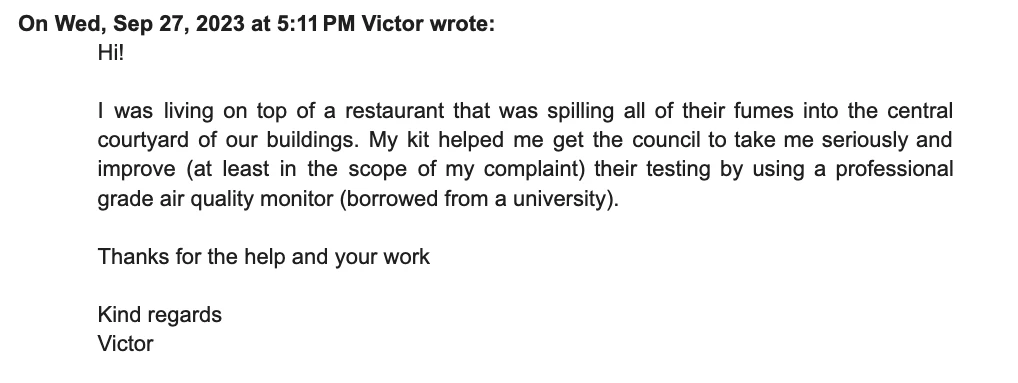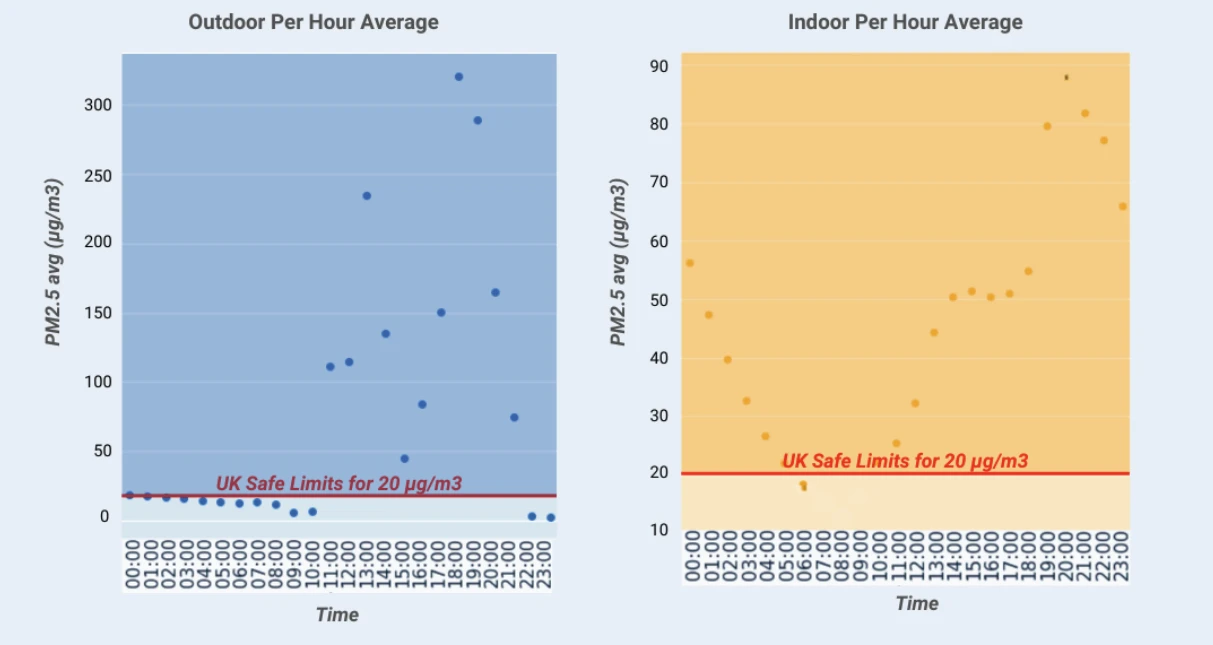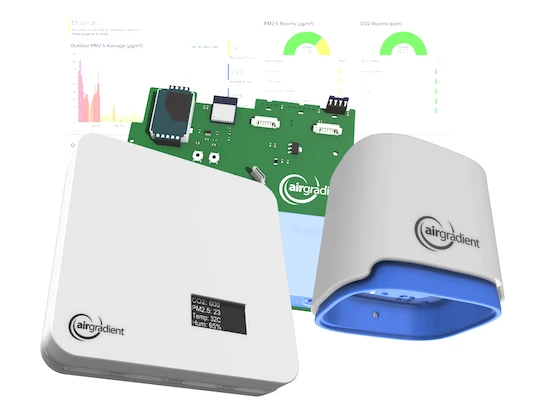Open and Accurate Air Quality Monitors
We design professional, accurate and long-lasting air quality monitors that are open-source and open-hardware so that you have full control on how you want to use the monitor.
Learn Moreby Jane Waterman on October 9, 2023
Can one person affected by massive air pollution truly make a difference? To find out, read below true story! End of September Achim received below email from Victor:

This obviously made us very curious, and so we reached out to Victor, interviewed him and wrote this case study.
Victor is a Liverpool City Centre resident, who decided to take a stand against poor air quality in his community. Whilst also raising questions about how air quality is measured in UK homes and whether it adequately protects residents.
Victor had been living in his flat for three months when he began to experience drowsiness and headaches. He had never suffered with this before so he began to think if it could be attributed to the air pollution coming from a neighbouring restaurant. Smoke from the cooking fumes from the restaurant could be seen outside his window.
His first step was reaching out to the local council to address the air quality issues. The council conducted a standard nuisance smell test, a common approach for domestic cases. Where human ‘sniffers’ go to a property to ascertain; odour strength, detectability, duration, recognizability, offensiveness, character and emission rate. The Council did recognise that there was an issue with the smells entering Victor’s flat and spoke to the restaurant about their air filtration system. The council ensured that the restaurant’s compliance with existing regulations were in order and directed them to stop directing their extraction pipe at Victor’s window. However, the regulations did not account for the unique nature of Victor’s case, where the restaurant used an enclosed patio as part of their fume extraction system. Which in turn continued to cause significant pollution inside Victor’s flat.
Victor faced a challenging situation: In domestic cases in the UK, Councils rely solely on the nuisance smells test, which fail to measure air contaminants. Victor realised that he would need to take further action for the council to take his complaint more seriously. He reached out to residents in his building to see if anyone else was suffering with adverse effects from the restaurant fumes in their homes. The residents confirmed that they were, and were happy to join the cause. They began by contacting the council, and emphasising the significant health implications that they were experiencing particularly residents with conditions like asthma.
Victor sought ways to assess the air quality in his flat, to persuade the council to continue with his complaint. Victor set up an AirGradient indoor air quality monitor. And this collected compelling data. Revealing that the levels of PM2.5 particles in his flat consistently exceeded UK safety limits, which stipulate an annual average of 20 µg/m3 for PM2.5. The data made it evident that pollution levels in Victor’s flat spiked during restaurant hours, particularly at dinner times.

Having data from the low-cost monitor did get the council to reassess Victor’s case but they had no way of knowing if the data he had gathered was accurate. So the council, not having its own reference instruments, loaned instruments from the University of Liverpool. These instruments confirmed Victor’s claims about the air quality surpassing UK safety limits, particularly with high PM2.5 readings in the courtyard outside of the flat. Armed with this new information, the council expanded its initial recommendations to the restaurant, emphasising the need for the establishment to develop a system to extract pollution away from the enclosed patio area which finally fixed the problem.
As a result of Victor’s determination and community support, he and his fellow residents can now open the windows of their flats and experience significantly cleaner air! Victor’s story emphasises the belief that clean air is a fundamental human right, and he has proven that anyone can bring about real change that benefits not only themselves but also their community.
Victor’s experience in Liverpool’s City Center serves as a powerful case study of an individual’s unwavering commitment to improving their living environment. It underscores the challenges and resource limitations faced by local authorities and emphasises the importance of community engagement and citizen science. The collection of data was undeniably the driving force to action change . Victor’s story is a call to action, urging us to strive for cleaner, healthier communities and reinforcing the idea that real change is possible when driven by determination and the pursuit of clean air as a universal human right.
Here are some tips what you can do if you are in a similar situation like Victor.
If you have a similar story like Victor, please let us know!
Curious about upcoming webinars, company updates, and the latest air quality trends? Sign up for our weekly newsletter and get the inside scoop delivered straight to your inbox.
Join our Newsletter
We design professional, accurate and long-lasting air quality monitors that are open-source and open-hardware so that you have full control on how you want to use the monitor.
Learn More